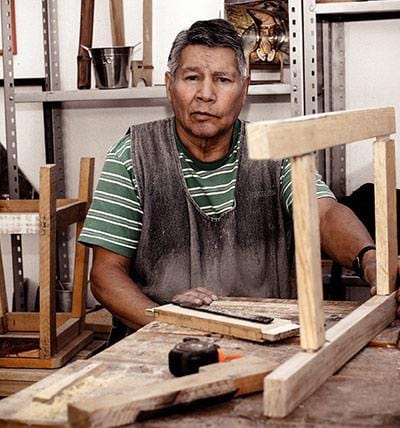Ah, the eternal chess battle between strategy and tactics! As a chess player, you've probably pondered this timeless question: What's more important in the game of kings? Well, let's dive right into the chessboard, shall we? Chess strategy, my friend, is like the compass that guides you through the wild terrain of the game. It's all about the big picture, the grand scheme, and the art of planning your moves to gain an advantage over your opponent.
A strategic player thinks ahead, maneuvers purposefully, and lays the foundation for victory. On the other hand, we have chess tactics, those cunning little devils that spice up the game and send shivers down your spine. They are the tactical tricks—the intricate dance of checks, captures, forks, pins, and skewers that keep you on your toes. A tactical chess player thrives on precision, calculation, and the thrill of a well-executed combination of moves that leaves the opponent gasping for breath. Don't get me wrong, my dear beginner. Strategy and tactics are crucial in our chess game. They intertwine like two dancers on a chessboard, each complementing the other.
You see, while strategy provides the roadmap, tactics are the agile soldiers that execute the plan on the battlefield. A chess game without strategy is like a ship without a rudder wandering in the sea of possibilities.
Conversely, tactics without strategy are like a puzzle missing its pieces—a scattered jumble of brilliant moves that lacks a coherent objective. So, my fellow chess enthusiasts, the true essence lies in the delicate balance between the strategic and the tactical, where masterful players harness the power of both to achieve checkmate and claim victory.

Remember, strategy is the compass, tactics are the dagger, and the chessboard is your canvas. Embrace them both, my friends, and let the game begin!
The Role of Tactics and Strategy in Chess: Understanding the Balance
Let's break it down, my friend, and unravel the intricate dance of tactics and strategy in chess. Here's the lowdown:
- The difference between strategy and tactics: in chess, strategy and tactics are two sides of the same coin. The strategy focuses on the long-term, the big picture, while the tactics are the swift, graceful moves that unfold on the board.
- Tactical play: Ah, tactics require sharpness and quick thinking. It's all about seizing the moment, calculating your opponent's every move, and pouncing on opportunities. A chess tactic is a move that aims to gain an immediate advantage, like a rook swooping in for a decisive checkmate.
- Strategic play: Strategy is the name of the game in good chess. It's about planning, positioning your pieces, and plotting your path to victory. Strategy requires a deep understanding of chess, like a knight strategizing several moves ahead.
- The importance of tactics: In chess, tactics hold immense power. They can make or break a game, my friend. Chess is 99% tactics, or so I've seen many chess gurus claim. Mastering tactical skills allows you to exploit your opponent's weaknesses, improve your position, and accumulate those precious victories.
- The significance of strategy: But don't underestimate the strategic side of the board. It's like having a wise trainer guide your every move. Strategy prevents you from stumbling like a novice player and allows you to anticipate your opponent's plans. The ability to create a sequence of moves steadily builds your advantage.
- The interplay between tactics and strategy: In the real game, tactics and strategy intertwine like skilled rivals in a tournament. Many players struggle to distinguish between the two, and that's where tactical mistakes can cost you dearly. To excel at the strategic art, a good chess player must have a sound grasp of opening theory, midgame planning, and endgame knowledge.
So there you have it, my fellow chess aficionado! The delicate balance between tactics and strategy separates the grandmasters from the amateurs. Learn to calculate those tactical moves and execute your maneuvers; the chess world shall be your kingdom.
Chess Tactics vs. Chess Strategy: Which Should You Prioritize?
Well, let's dive into the chessboard battlefield and find out, shall we? Chess is 99% tactics, as many wise minds have proclaimed. Those tactical maneuvers can lead to swift checkmates and decisive victories. Reacting to your opponent's moves with precise tactical play allows you to achieve tangible results, one move at a time. But hold on a moment.
Don't disregard the power of strategy. It's like a browser that navigates the long-term course of the game. Strategic moves prevent your opponent from seizing control and provide you with a solid foundation. So, the question often asked is: should you prioritize purely tactical brilliance or the strategic mastery of the chessboard? Well, the truth lies in the delicate dance between the two. A grandmaster knows that tactics without a strategy can go a long way but might stumble in the face of a well-prepared opponent.
Conversely, a strategic genius without tactical motifs can find their plans crumbling like a fragile castle.
The key lies in finding the balance, where tactics and strategy intertwine to create a harmonious symphony of moves.
Like a skilled bishop on the board, you must navigate the depths of both, for a master-level player knows the true difference between the two.
Mastering Chess Tactics: Enhancing Your Ability to Outmaneuver Your Opponent
Let's delve into the world of mastering chess tactics, and unleash your ability to outmaneuver your opponent. Here's the scoop:
- Enhancing tactical prowess: Ah, tactics are the heart and soul of chess. They are like the fiery arrows in your quiver, ready to strike and unravel your opponent's plans. Mastering chess tactics is like sharpening your sword, honing your skills to a razor's edge.
- Reacting to your opponent: Tactical brilliance is about reading the battlefield, anticipating your rival's moves, and striking when the iron is hot. It's like a game of cat and mouse, where you pounce on opportunities and leave your opponent bewildered.
- The dance of strategy and tactics: Don't get me wrong, my friend. Strategy plays a vital role, too, like the steady hand guiding your tactical brilliance. Strategy is the long-term plan, the calculated moves that set the stage for tactical fireworks. They work hand in hand, like partners in a masterful duet.
- The grandmaster touch: Ah, the grandmasters, those chess wizards who have reached the pinnacle of the game. They possess an otherworldly understanding of tactics, maneuver with precision, and execute mind-boggling combinations. At the master level, chess becomes an intricate dance of strategy and tactics.
So, my fellow chess enthusiast, let the tactics be your ally and your secret weapon on the chessboard. Master the art of outmaneuvering your opponent, read the squares like a seasoned tactician, and ignite the fires of victory. Remember, strategy and tactics are like two sides of the same coin, working together to shape your path to triumph.
Chess Strategy Unveiled: The Art of Planning Your Moves and Outsmarting Your Opponent
Let's lift the veil, my friend, and uncover the captivating world of chess strategy. Brace yourself for the art of planning your moves and outsmarting your opponent. Here's the inside scoop:
- The strategic battlefield: Chess is like a battlefield; strategy is your battle plan. It's all about thinking several moves ahead, weaving a web of deception, and luring your opponent into your cunning trap. Strategy is the architect that constructs your path to victory.
- Beyond the 99%: While tactics hold tremendous power, strategy is the secret ingredient that elevates your game to new heights. As the saying goes, chess may be 99% tactics, but without a well-crafted strategy, those tactics would be like arrows without a bow.
- The mind game: Strategy is the ultimate mind game. It's about anticipating your opponent's moves, decoding their plans, and devising countermeasures that leave them bewildered. It's a dance of wits, where you outmaneuver your rival with calculated precision.
- The grandmaster touch: Ah, the grandmasters, those chess titans who have mastered the delicate balance between strategy and tactics. They possess an unparalleled understanding of the strategic landscape, navigating the chessboard with grace and poise. At the grandmaster level, strategy becomes an exquisite art form.
So, embrace the power of strategy—the art of planning your moves like a master conductor leading a symphony. Unleash your strategic brilliance, anticipate your opponent's every move, and leave them in awe of your tactical finesse. Remember, strategy and tactics are two sides of the same coin, intertwining to shape your path to triumph on the chessboard.

The Endgame Dilemma: How Tactics and Strategy Interplay in the Final Stages of Chess
It's the moment of truth when tactics and strategy intertwine in a showdown on the chessboard. Let's dive right into this captivating realm:
- The ultimate test: is the endgame, where the stakes are high and every move carries immense weight. They say chess is 99% tactics, but the endgame is where strategy takes center stage. It's a delicate dance of maneuvering and calculation that can make or break the game.
- The tactical finesse: In the endgame, tactical brilliance can be a game-changer. Those cunning maneuvers, precise calculations, and clever tactical motifs can turn the tide in your favor. They are like arrows in your quiver, ready to pierce through your opponent's defenses.
- The strategic panorama: However, strategy is no less important. The endgame requires strategic thinking, where every move shapes the battlefield and influences the outcome. It's about positioning your pieces, creating pawn structures, and exploiting weaknesses in your opponent's camp.
- The grandmaster touch: Ah, the grandmasters, those chess virtuosos who profoundly understand the interplay between tactics and strategy in the endgame. They navigate the treacherous waters with the grace of a seasoned sailor, unleashing tactical brilliance within a strategic framework.
So, my fellow chess enthusiasts, embrace the endgame dilemma with courage and finesse. Unleash your tactical prowess while keeping a strategic eye on the prize.
Summary
Regarding chess, the age-old debate of what holds more sway—tactics or strategy—rages on like a fierce battle on the board. Some argue that tactics like a swift sword strike can carve through the enemy's defenses and secure victory in a blink. Others believe that strategy, akin to a cunning general, guides the overall course of the war and ensures triumph in the long run. But let me tell you, chess is a complex beast, and there isn't any one-size-fits-all answer here. It's like trying to choose between a fiery dragon or a nimble ninja—both have their strengths, you know? The truth is that strategy and tactics dance together in a delicate tango, complementing each other in a symphony of moves. A grandmaster knows this dance like the back of their hand. They embrace a strategy to set the stage, control the tempo, and unleash their tactical brilliance at the right moment. So, my friends, it isn't a question of strategy or tactics—it's about how they play in perfect harmonies, like a melody that weaves through the very soul of the game.

Common Questions
Are tactics and strategy completely separate in chess, or do they work hand in hand like two peas in a pod?
Well, let me tell you, in chess, tactics and strategy are like two star-crossed lovers destined to be together.
They may have unique flavors, but they intertwine and mingle on the board, creating a symphony of moves that can dazzle even the grandest masters.
Tactics are like lightning bolts, striking with precision and causing havoc instantly, while strategy sets the stage, directing the flow of the battle. It's a beautiful dance between the quick-witted maneuvers and the long-term plans, creating a tapestry of brilliance that sets the stage for victory.
Can a player rely solely on tactics or strategy to succeed in chess, or is a balanced approach the key to triumph?
My friend, finding the right balance between tactics and strategy is like walking a tightrope in a gusty wind. You see, relying solely on tactics is like having a pocketful of dynamite—you might make a big bang, but it won't take you very far. On the other hand, a player who only focuses on strategy is like a captain steering a ship without sails—they'll have a grand plan but no way to execute it. To truly conquer the chessboard, one must embrace the yin and yang of tactics and strategy, combining a sword's sharpness with a sage's wisdom.
Can a grandmaster excel in tactics and strategy, or are they more inclined towards one aspect of the game?
Now, that's a tricky question, my friend. While there may be some grandmasters who lean more towards tactics or strategy, the crux of the matter lies in their ability to harmonize the two. You see, a grandmaster is like a chess maestro, conducting a symphony of moves that showcase their prowess in tactical brilliance and strategic finesse. They possess the eyes of an eagle, spotting tactical opportunities with lightning speed while crafting a masterful strategy to outmaneuver their opponents. The fusion of these two elements elevates them to the pinnacle of the chess world, where genius and mastery collide.
ABOUT THE AUTHOR
Nurlana Alasgarli
Content Specialist
Nurlana Alasgarli is a professional copywriter with more than 6 years of creative writing experience. Having lived and experienced all over the world, there are many writing genres that Nurlana follows, including nature, arts and crafts and the outdoors. Nurlana brings life to content creation, captivating her readers.






